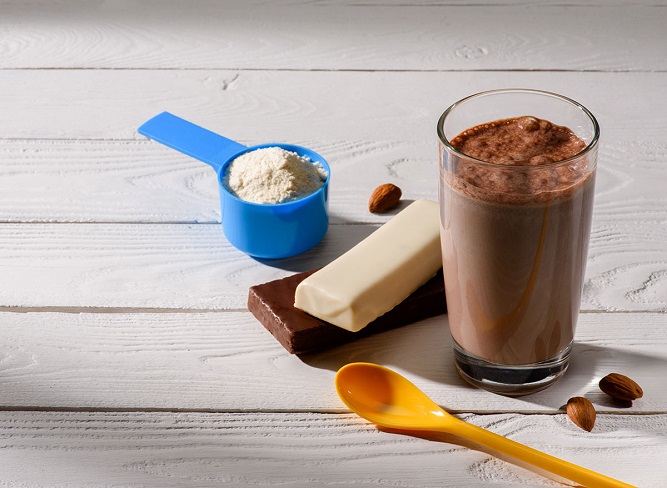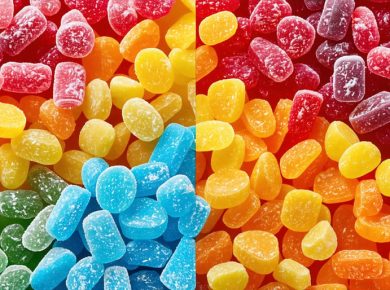The real protein powder recommendation, the macronutrient that helps in building strong muscles, is a very sought-after nutrient, especially by athletes, gym-goers, and people who take their exercise very seriously. It’s normal to find fellow gym-goers bringing along tumblers of cold protein shake, seeking to achieve enviable gains.
Protein, however, as well-known as it is, may not be as understood as it should be. For one, there is an ongoing debate on whether it is better to drink a protein shake before or after a workout. There are varying opinions on this. However, there is more to protein than just when it is consumed.
But before we discuss the best time to drink your protein powder shake, let’s watch the video below and answer the question: Does protein powder actually work?
The Recommended Daily Allowance
What is the Recommended Daily Allowance of protein? The Recommended Daily Allowance, or RDA, is the approximate amount of a particular nutrient a person must have to circumvent deficiency. There are, however, no specifications on how much is needed to advance health and body composition.
The RDA for protein is rather low, at 0.36 grams per pound of body weight, and this requires people who are working out to build strength to double their protein intake. To paint a more vivid picture, a person weighing 68 kilograms may need to intake 100 grams of protein per day.
While believed to be beneficial, protein shakes work better as snacks and not as total food replacements. It may be best to drink them between meals and around workout sessions.
The Difference The Anabolic Window Makes
What is the anabolic window, and why do people think it matters?
The Anabolic Window is a 30-minute window during which muscles become highly receptive to protein. Furthermore, it is believed that protein consumption outside of the said window may not lead to effective muscle utilization or development.
Recent research on the anabolic window indicates that it is significantly longer than just 30 minutes and that it may not just be a post-exercise phenomenon.
Furthermore, whether a person drinks protein shakes before or after a workout may not really contribute to muscle growth and optimization.
Protein Shake Before Versus After Workout
There has only really been one study that has taken on the mystery of whether having a protein shake before or after a workout is better than the other.
The study involved 21 male participants being divided into two groups. The common variable between the two groups was that all the participants were given a protein shake with 25 grams of protein. The difference was in the time of intake. While the other group drank the protein shake right before the workout, the other drank it right after.
The workout was a whole-body workout that had to be completed three times a week for ten weeks.
The results were anticlimactic, showing no notable differences in the physical development between the groups. Judging from the results, protein intake can be done either way without much difference, provided such is done around the workout.
Daily Protein Intake
However, the scrutiny did not just stop there. Researchers looked further on whether or not protein intake around a workout even mattered. The results were opposing, dividing the researchers in question.
Narrowing down on the findings gathered from the 23 studies, the conclusion is that it is not whether protein consumption is done close to the workout that will more likely make a significant difference in muscle growth, but the total protein intake per day.
Getting That Protein
Protein can be found in many types of food, although meat, fish, dairy, and poultry are the most known sources. The nutrient can also be found in beans, nuts, soy, and legumes. The protein derived from these is called plant-based protein.
According to research, animal-based protein is much better than plant-based proteins for muscle growth, although a good mix of both is also beneficial. Protein shakes can also help in increasing protein intake. However, it is not enough for food replacement.
There are also protein powders that can be found in the market, some examples of which being:
- Whey protein – It is a milk protein that is easy to digest and easy to absorb. Whey proteins have beneficial bioactive proteins.
- Casein protein – Casein is also a milk protein, but it is digested a lot more slowly than whey. Casein protein is good for fasting periods. Also, some casein protein brands can give as much as 60% of the drinker’s RDA for calcium in every scoop.
- Egg protein – Pure egg white protein is the main ingredient of egg protein powders. They have an average digestion time and are rather pricy.
- Soy proteins – This is a plant protein that has all the essential amino acids. Vegetarians will find this highly preferable for a protein source.
- Rice and pea proteins – Although they do not have all the essential amino acids apart, their mix results in a complete protein. Rice and pea proteins are good for those with soy, dairy, or egg allergies as they are low-allergenic.
The intake of protein shakes brings some apprehensions due to the wrongful association of high-protein diets with osteoporosis and kidney disease. However, for most people, such a diet is safe. The wrongful association is without evidence, and healthy people can enjoy for themselves a good protein shake. Although, these shakes shouldn’t be meal replacements.
In Conclusion
Protein is a very important macronutrient for muscle growth and development, and it can be derived from both animals and plants. Protein shakes, although helpful in increasing protein intake, are not total food replacements.
A person’s daily total intake of the protein determines the significance of muscle growth and development and not when protein is consumed. Lastly, consuming more protein than what is stated in the RDA is not a problem.






